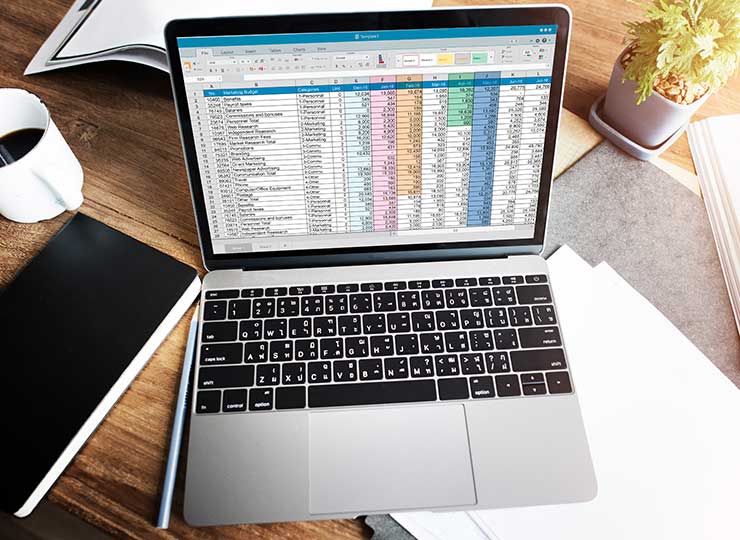Free cources
Microsoft Excel. Definition – What does Microsoft Excel mean? Microsoft Excel is a software program produced by Microsoft that allows users to organize, format and calculate data with formulas using a spreadsheet system. This software is part of the Microsoft Office suite and is compatible with other applications in the Office suite.
MS Office. Excel. Word. Powerpoint. Outlook. Excel is an electronic spreadsheet program that is used for storing, organizing, and manipulating data. The information we’ve prepared refers to Microsoft Excel in general and is not limited to any specific version of the program.
Microsoft Excel is a spreadsheet program included in the Microsoft Office suite of applications. Spreadsheets present tables of values arranged in rows and columns that can be manipulated mathematically using both basic and complex arithmetic operations and functions.
Microsoft Excel is a spreadsheet program included in the Microsoft Office suite of applications. Spreadsheets present tables of values arranged in rows and columns that can be manipulated mathematically using both basic and complex arithmetic operations and functions.
VBA stands for Visual Basic for Applications. Excel VBA is Microsoft’s programming language for Excel. Excel Definition Excel definition: software program by Microsoft that uses spreadsheets to organize numbers and data with formulas and functions.
1 Create a Macro: With Excel VBA you can automate tasks in Excel by writing so called macros. In this chapter, learn how to create a simple macro. 2 MsgBox: The MsgBox is a dialog box in Excel VBA you can use to inform the users of your program. 3 Workbook and Worksheet Object: Learn more about the Workbook and Worksheet object in Excel VBA.
These are the functions that you use every time you create a formula in an Excel worksheet and, as a side-note, you can also use them in VBA. Some examples of worksheet functions are SUM, IF, IFERROR and VLOOKUP function. Worksheet functions work very similarly to Excel VBA Function procedures.
Where to Code Excel VBA? To access the VBA window, press Alt + F11 within any Office program.
EXCEL – LEVEL 1
• The Fundamentals of Excel
• Cut, Copy, Insert, Delete, Paste Special
• Custom Formatting, Undo, Redo
• Excel Formulas – The least you should know
• Useful functions and Paste Function
• Calc, Comments, Drawing toolbar, Edit Replace,
• Delete, Clear
• Essential Printing
• Data Sorting, Hiding, AutoFormats
• Protection, Basic Charts, Basic Formatting
• If Function
EXCEL – LEVEL 2
• Excel Fundamentals
• Worksheet Formulas
• Specific Worksheet Formulas
• Extract Data and Decision Making
• Data Validation and External References
• Advanced Filters, AutoFilters, Names
• Charts
• Under Utilized Features
• Protection, Shared Workbooks, Track Changes, Merging Shared Workbooks
• Custom Views, Report Manager, Hyperlinks, Outlining
EXCEL – LEVEL 3
- Advanced Formulas
- Advanced Filters, Text To Columns, Importing Text Files
- Pivot Tables 1
- Pivot Tables 2
- Pivot Tables 3
- Scenarios, Goal Seek
- Data Tables and Consolidation
- Excel on the Web
- Macros1
EXCEL – VBA LEVEL 1
- The Fundamentals of Excel VBA, The Visual Basic Editor, Objects and Properties
- Excel Objects – Workbook Included, Object Hierarchy, Application, Workbook, Worksheet, Range, Command Bars
- Variables and Constants, Data types, Variable Levels, Declaring Variables, Constants
- Loops, Types of Loops, Loop Pitfalls
- Effective Decision Making, If/And /Or, Select Case, Dates and Times
- Workbook and Worksheet Events
- Debugging and Error Handling, Prevention, Good Habits, Runtime Errors
- Excel Worksheet Functions in VBA, Specific Examples, Excels Built-In Features
- User Defined Functions, Good vs. Bad, Arguments, Calculation
- Controls, ActiveX, Control Toolbox, Control Properties, Control Parents
EXCEL – VBA LEVEL 2
- User Forms Introduction
- Filling User Form Controls, Putting Data into our Controls, When to put Data into our Control, Filling a List Box and/or Combo Box using Loops
- Multi-Page Control, Creating a wizard using the Multi-Page Control
- Validating the User Inputs, Some Useful Methods and Functions
- When to apply Validation, Control Events
- Which Controls to use and When
- Parsing Control Values back to a Spreadsheet, Parsing range values to the User Form Controls
- Option Buttons and Checkboxes in Detail, True or False
- Creating Template Controls, Using the Ref Edit Control
- Finding the Active Control, Creating Controls at Runtime
VINOD KUMAR
10+ YEARS OF EXPERIANCE IN EXCEL WITH VBA
- Mon-Fri (60hrs) 7am-9pm
- Mon-Fri (60hrs) 7am-9pm
